
Here is another set of great images of volcanoes seen from above - including some remote island volcanoes and a trio from Russia. Enjoy!
1. Galeras
Image: From April 3, 2013 - NASA/JPL
This isn't an image taken from space, but rather by an aircraft - the UAVSAR. This is a Gulfstream III with a synthetic aperture radar strapped to its underside. It also detailed radar images and INSAR studies of the land surface to look for deformation on volcanoes (as one example). This image is of Galeras in Colombia and shows the breached summit of the volcano, along with the new cone that is being constructed within the amphitheatre. What also jumps out at me is the evidence of humans on the slopes of the volcano, including the farming plots and road on the right side of the image. These lie only a few kilometres from the summit of this active Andean volcano.
2. Etna
Image: From March 31, 2013 - Commander Hadfield ISS
I like this image for the changed perspective on Etna in Sicily. Many of the images taken from satellites are looking down directly on the volcano, but this image from the International Space Station shows an oblique view of the volcanic cone with a thin, wispy steam plume. You can clearly see the dark lava flows from the volcano spreading laterally into they reach the greener areas that have not been inundated by volcano material. You also get a clear sense of the size of Etna, as its upper flanks are still covered in snow while the rest of Sicily is clearly free of winter's grasp.
3. Popocatépetl
Image: From March 7, 2013 - NASA Earth Observatory
Although the Mexican volcano never produced the large eruption that everyone was worried about last spring, Popocatépetl is still rumbling along. This NASA Earth Observatory image shows a healthy steam-and-ash plume from the volcano spreading eastward across the Mexican countryside at a height of over 1.5 kilometres (~4,900 feet) the Popo's summit.
4. Paluweh
Image: Main image from March 24, 2013, inset from March 31, 2013 -
NASA Earth Observatory
Paluweh in Indonesia is still producing moderate explosive eruptions caused from the extrusion and destruction of the summit dome of the volcano. This plume can spread ash across multiple island in the archipelago - and when you look at the island that is dominated by the volcano (inset), you can see the evidence of these collapses in the grey debris on the slopes of the volcano. This is dome material that crumbled and avalanched down the side of the volcano, likely in the form of a pyroclastic flow.
5. Pagan
Image: From March 25, 2013 - NASA Earth Observatory
One of the most important uses of remote sensing of volcanoes is to monitoring remote islands. This image shows a wispy steam-and-ash plume from Pagan in the Mariana Islands, spreading to the northwest. Many times these plumes are not noticed by any land-based observers but the record maintained by satellite imaging of the planet captures these ephemeral events.
6. Michael
Image: From April 1, 2013 - NASA
Light outside the range of human perception. In this case blue light is combined with two different wavelengths of shortwave infrared light - 1.6 and 2.1 micrometres. Pristine clouds appear light orange, while clouds affected by the volcano's aerosol plume are white. This is how a plume from Michael in the South Sandwich Islands can be spotted through a thick cloud deck. Michael is about a remote as they come for volcanoes, but it is one of the few volcanoes on Earth that may have an active (or occasionally active) lava lake, so plumes like this can offer clues to whether the lava lake is still present.
Special thanks to Rob Simmon of the NASA Earth Observatory for help with explaining false colour images.
7. Fogo
Image: From April 2, 2013 - Commander Hadfield ISS
Fogo is part of the Cape Verde Islands, a hotspot-related island chain off the western shores of Africa. The youngest cone, Pico, sits within a summit caldera and dark lava flows from Pico can be seen on the image flowing to the northeast (some of these flows were active during the 16th to 18th century - and north is down). The other feature that stands out at Fogo are all the small cinder cones that pockmark the slopes of the volcano. This is a common feature on hotspot volcanoes, especially during the waning years of their active life. The last eruption from Fogo was in 1995.
8. Shiveluch
Image: From March 2, 2013 - NASA Earth Observatory
We finish off with a trio of Russian volcanoes. Shiveluch is still as active as ever, with this image showing ash on the white snow. The successive passes of satellites over the region allows for monitoring of the changes at these volcanoes that are hard to reach regularly.
9. Kizimen
Image: From March 12, 2013 - NASA Earth Observatory
In this shot of Kizimen, the debris on the slopes is likely due to a dome collapse similar to what I mentioned at Paluweh in Indonesia. This style of dome growth and collapse is common at a lot of volcanoes in Kamchatka, and the healthy plume at the summit is likely obscuring our view of slowly extruding lava that forms the dome. Once the dome gets too steep, it collapses gravitationally and sends debris downslope as pyroclastic flows. Sometimes, however, lava flows can form instead (marked on the image, but covered with snow).
10. Tolbachik
Image: From March 6, 2013 - NASA Earth Observatory
Not all volcanoes on the Kamchatka Peninsula create and destroy summit domes. The current eruption at Tolbachik has been issuing long lava flows since November 2012 and even formed a small lava lake at the summit. This style of activity is rare in Kamchatka, but at Tolbachik, this is the form the most recent eruptions have taken. The eruption at Tolbachik is still going strong, so these dark lava flows will likely continue to be active for the weeks or months to come.
Related Posts:
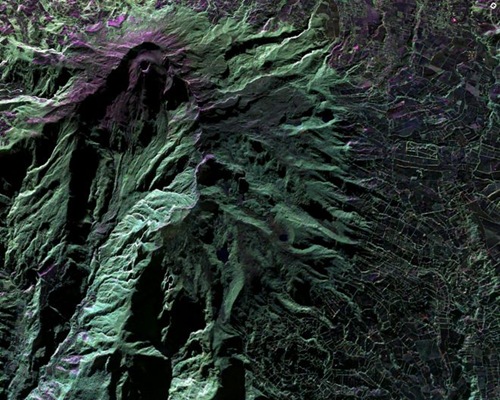
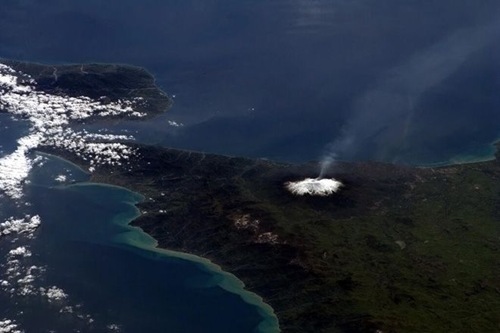
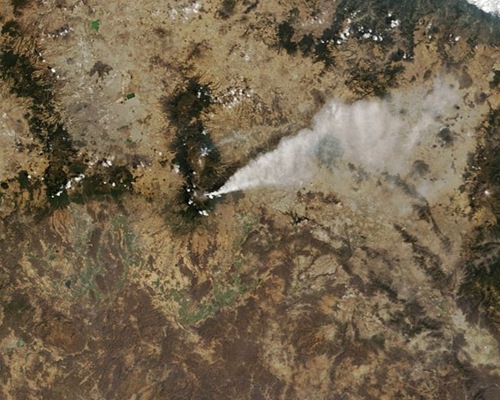
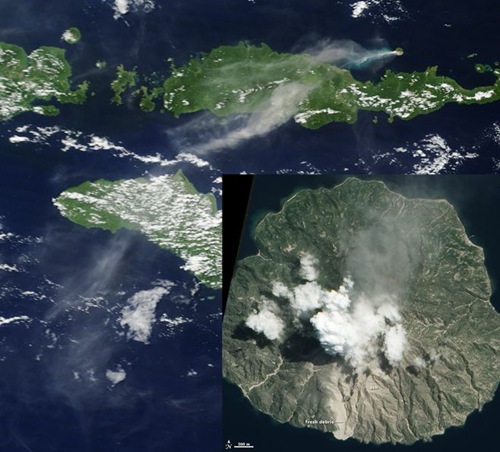
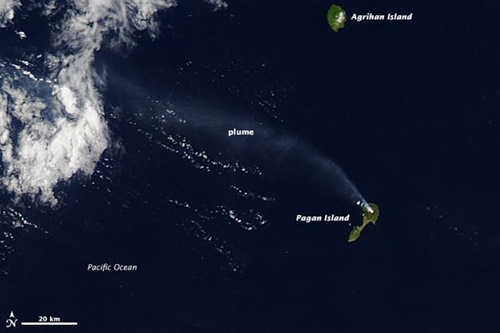
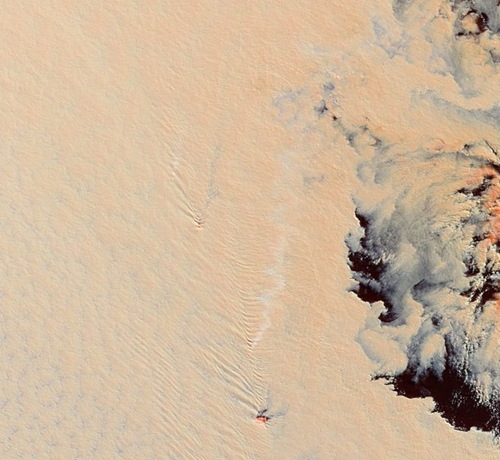
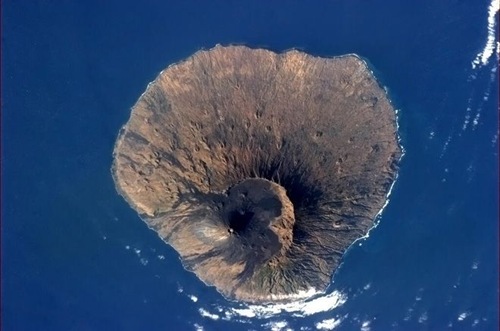



No comments:
Post a Comment
Please adhere to proper blog etiquette when posting your comments. This blog owner will exercise his absolution discretion in allowing or rejecting any comments that are deemed seditious, defamatory, libelous, racist, vulgar, insulting, and other remarks that exhibit similar characteristics. If you insist on using anonymous comments, please write your name or other IDs at the end of your message.